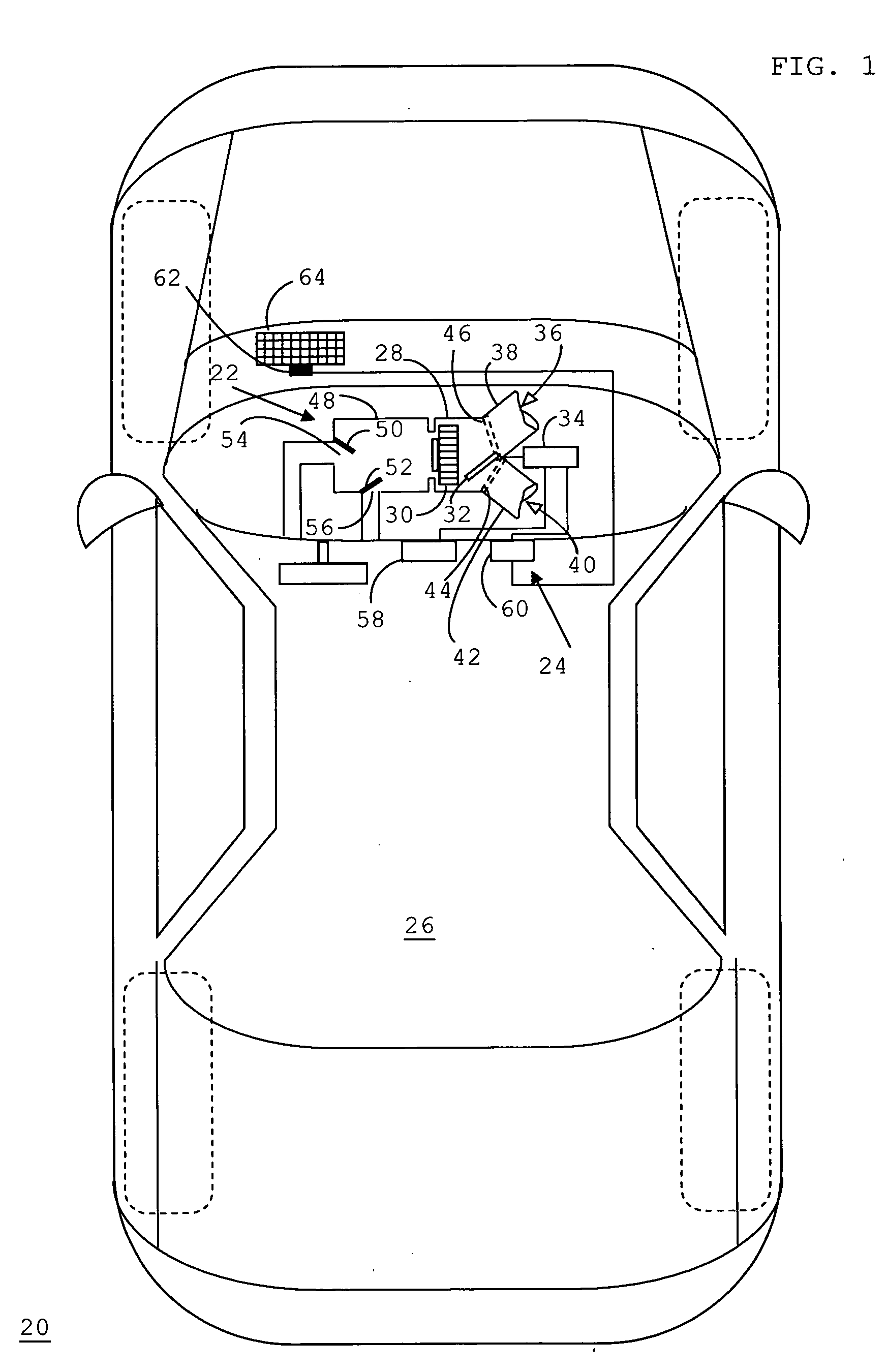System and method for controlling a ventilation unit of a vehicle
a technology for ventilation units and vehicles, applied in vessel parts, transportation and packaging, vessel construction, etc., can solve the problems of frequent cycle of ventilation units, affecting the health of individuals, and affecting the safety of passengers, so as to achieve the effect of convenient installation
- Summary
- Abstract
- Description
- Claims
- Application Information
AI Technical Summary
Benefits of technology
Problems solved by technology
Method used
Image
Examples
Embodiment Construction
[0022]FIG. 1 shows a top schematic view of a vehicle 20 having a ventilation unit 22 controlled by a sensor system 24 in accordance with a preferred embodiment of the present invention. Vehicle 20 may be any passenger or cargo vehicle for which airflow to an interior compartment 26 is controlled. Ventilation unit 22 may be a conventional vehicular heating, ventilation, and air conditioning (HVAC) unit. However, that is not a limitation of the present invention. Rather, ventilation unit 22 may simply include means for selectively enabling inlet of outside air or recirculated air from interior compartment 26, as well known to those skilled in the art. Accordingly, only those elements of ventilation unit 22 that are pertinent to the present invention are described herein.
[0023] Ventilation unit 22 includes an air intake duct 28 having an inlet air blower 30 driven by a blower motor (not shown) to force inlet air past additional elements of ventilation unit 22, such as a filter and eva...
PUM
 Login to View More
Login to View More Abstract
Description
Claims
Application Information
 Login to View More
Login to View More - R&D
- Intellectual Property
- Life Sciences
- Materials
- Tech Scout
- Unparalleled Data Quality
- Higher Quality Content
- 60% Fewer Hallucinations
Browse by: Latest US Patents, China's latest patents, Technical Efficacy Thesaurus, Application Domain, Technology Topic, Popular Technical Reports.
© 2025 PatSnap. All rights reserved.Legal|Privacy policy|Modern Slavery Act Transparency Statement|Sitemap|About US| Contact US: help@patsnap.com



